
Baryonyx caused quite the to-do in paleontology circles back when it was formally described in 1986, as no one had ever seen a theropod quite like it before. Indeed, for a time it was even thought to be a member of a whole new family: Baryonychidae. As well, its large, powerful arms led some experts to surmise that it was quadrupedal, which is how it was depicted in a number of dinosaur books from the late 80s. And while it was suspected to be a fish eater early on, a 1987 hypothesis proposed that it was actually a scavenger that used its claws to rip open carcasses and then inserted its long, narrow snout to pull out the entrails as seen in this charming vintage illustration.
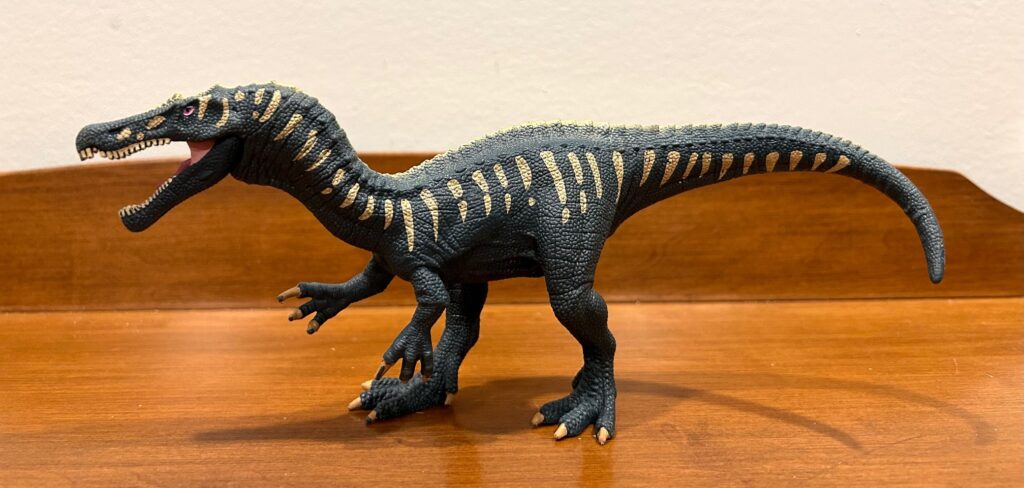
Schleich’s first stab at a Baryonyx was really quite gruesome, just like virtually all of their early prehistoric toys. They finally took a second stab at the spinosaur in 2020, and right away you can tell that it’s a vast improvement. Standing 10 cm tall and measuring 23.5 cm long, this individual is posed with its torso tilting forward slightly, its head raised, and the tip of its tail pointing downward to the left. The right leg is extended forward and the right arm is raised higher than the left. It’s a good active pose that lends itself to any number of scenarios and the toy stands fine on its own two feet. And, of course, the lower jaw is hinged so that it can open to degrees. Somewhat annoyingly, however, it will not stay closed all the way on mine.

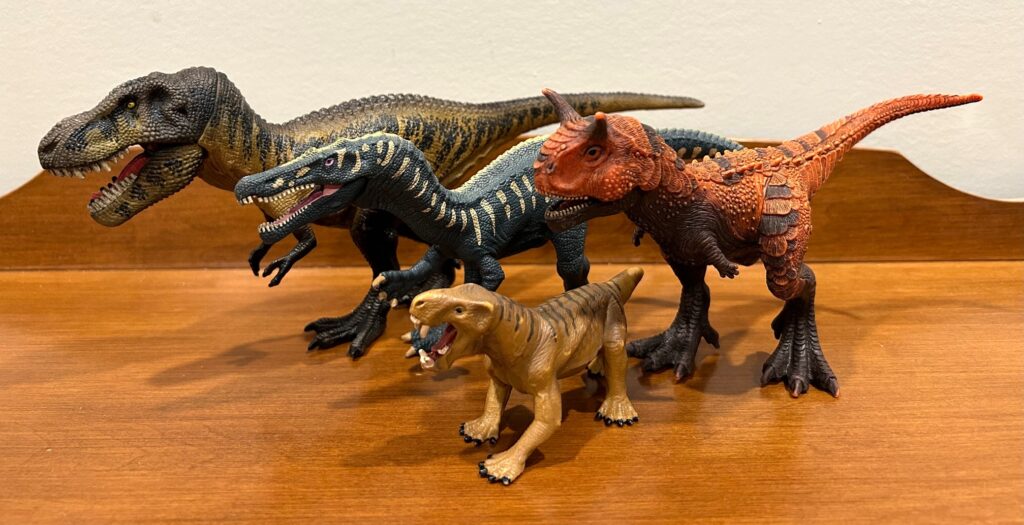
The main colour on this toy is a dark blue grey with beige stripes, light brown claws, bright pink eyes, white teeth, a light pink mouth, and a dark pink tongue. It’s a relatively simplistic colour scheme, but the beige and the blue grey compliment each other well. A bit of pink from the mouth shows on the Baryonyx‘s throat when the mouth is closed, but it’s only noticable when viewing the toy from beneath. Oh, and forgive all the scuffs on the claws; this Baryonyx has been played with a good bit.
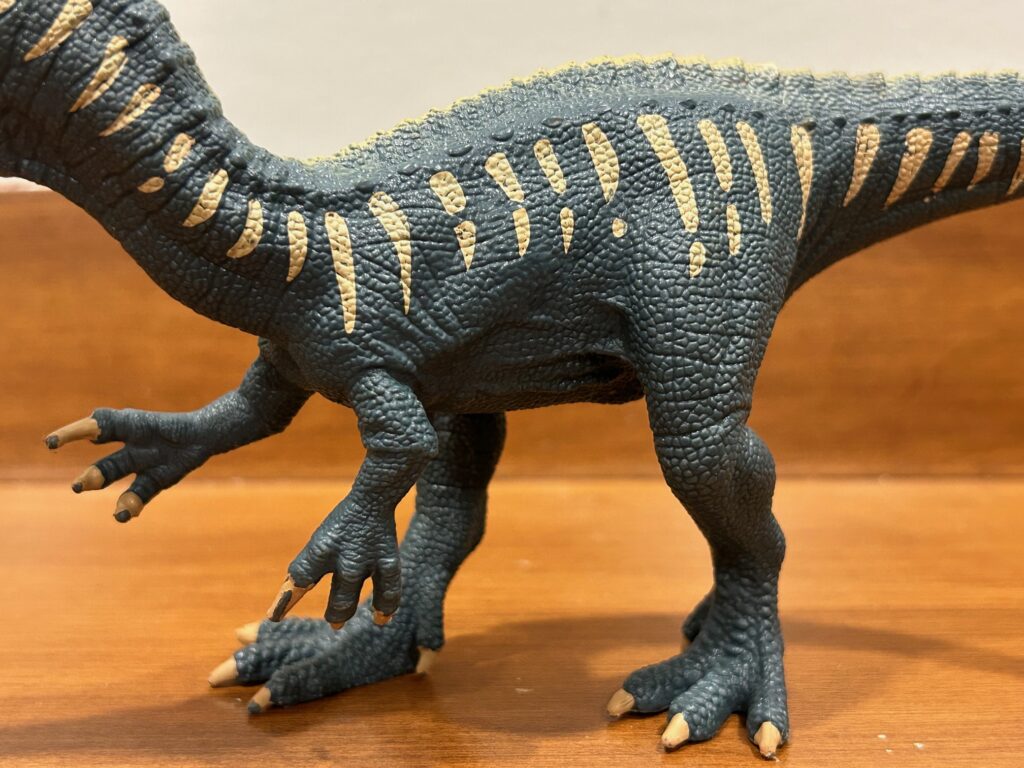
The Baryonyx‘s skin is covered all over in pebbled scales, along with plenty of faint wrinkles. A row of large, thick scutes runs along the top of the neck, the torso, and partway down the tail, with a single row of small osteoderms on either side. The arms look pretty good, but the famous foreclaws are too small and the musculature on the legs appears somewhat underdeveloped. The feet are oversized, not surprisingly, but not grossly so. As well, the tail looks to be a little bit too short.
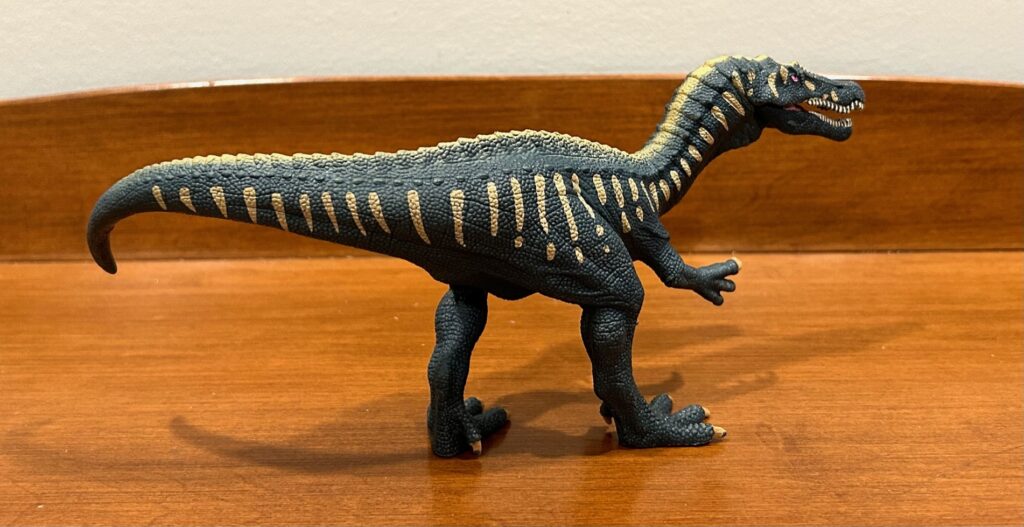
The head looks reasonably accurate in profile, with both the small triangular crest atop the head and the notch in the upper jaw. However, the teeth are rather peg-like rather than curved and pointed. Moreover, when viewed from above, the snout is too wide and lacking the signature bulge at the tip.
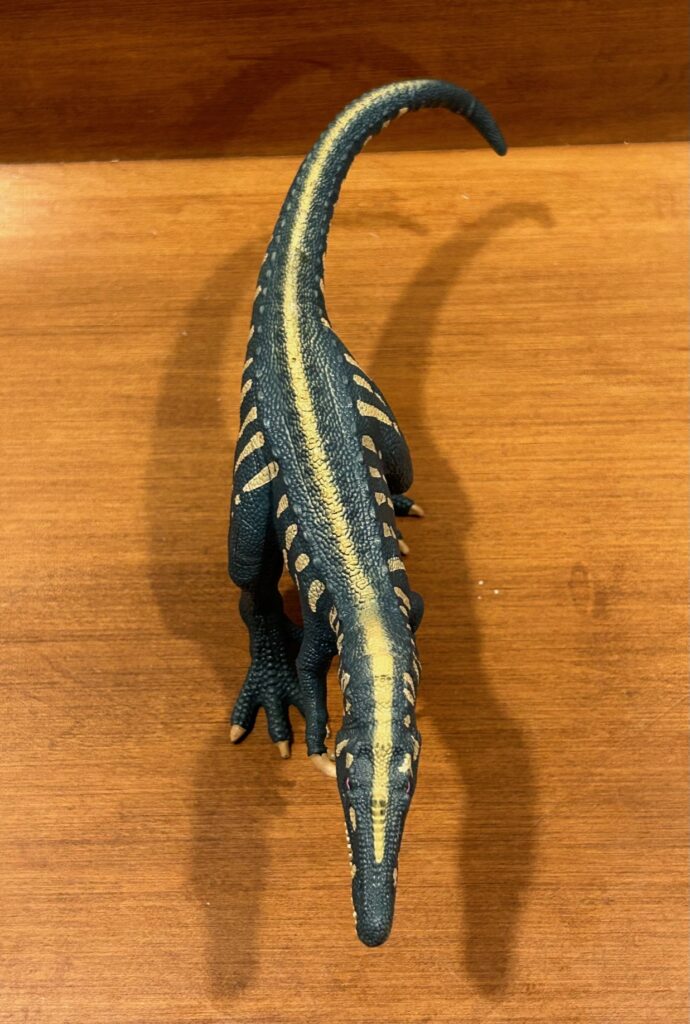
Overall, this is a durable and fun toy, and one of Schleich’s better theropods, although it certainly doesn’t approach the level of excellence of the Wild Safari Baryonyx or the pair from Haolonggood. It can generally be found wherever Schleich prehistoric products are sold.

Support the Dinosaur Toy Blog by making dino-purchases through these links to Ebay and Amazon. Disclaimer: links to Ebay.com and Amazon.com on the The Dinosaur Toy Blog are often affiliate links, when you make purchases through these links we may make a commission
Trending Products











